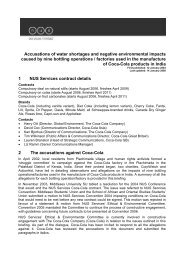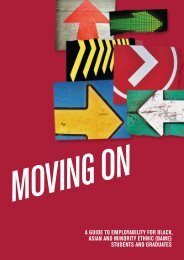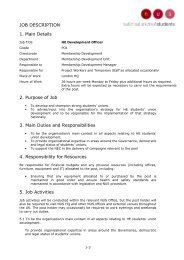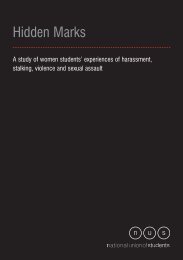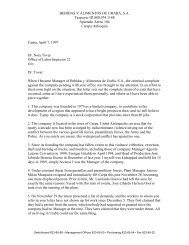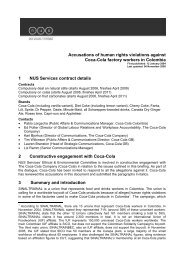No Place for Hate Crime - National Union of Students
No Place for Hate Crime - National Union of Students
No Place for Hate Crime - National Union of Students
You also want an ePaper? Increase the reach of your titles
YUMPU automatically turns print PDFs into web optimized ePapers that Google loves.
<strong>No</strong> <strong>Place</strong> <strong>for</strong> <strong>Hate</strong><br />
higher levels <strong>of</strong> depression, anxiety, difficulty sleeping<br />
and other symptoms <strong>of</strong> post-traumatic stress than<br />
victims <strong>of</strong> non-prejudiced incidents <strong>of</strong> similar severity.<br />
Furthermore, those who experienced hate incidents<br />
were far more likely to feel emotions related to their<br />
self-esteem and sense <strong>of</strong> inclusion. In 47 per cent<br />
<strong>of</strong> incidents involving prejudice against the victim’s<br />
sexual orientation and 48 per cent involving prejudice<br />
against their gender identity, the victim reported<br />
feeling vulnerable. Forty-six per cent and 31 per cent<br />
<strong>of</strong> incidents <strong>of</strong> biased incidents, respectively, resulted<br />
in a loss <strong>of</strong> confidence, whereas only 29 per cent <strong>of</strong><br />
non-biased incidents were reported to have caused the<br />
victim to feel vulnerable and only 22 per cent triggered<br />
a loss <strong>of</strong> confidence.<br />
Thirty-two per cent <strong>of</strong> incidents involving bias against<br />
sexual orientation and 22 per cent <strong>of</strong> those related to<br />
gender identity resulted in the victim feeling isolated<br />
or alone, nearly three times as much as in non-bias<br />
incidents. The qualitative data suggested that while<br />
emotions common to both hate and non-prejudiced<br />
incidents (such as anger or annoyance) were likely to<br />
dissipate soon after the incident, feelings related to<br />
vulnerability, isolation and self-esteem were more likely<br />
to be internalised and have long-term effects.<br />
Chart 14 Emotional reactions as a result <strong>of</strong> victimisation<br />
Anger<br />
48%<br />
58%<br />
55%<br />
Shock<br />
Fear<br />
20%<br />
33%<br />
34%<br />
31%<br />
32%<br />
28%<br />
Depression<br />
14%<br />
11%<br />
24%<br />
Anxiety<br />
19%<br />
25%<br />
35%<br />
Loss <strong>of</strong> confidence<br />
22%<br />
31%<br />
46%<br />
Incidents motivated by<br />
prejudice against sexual<br />
orientation<br />
Feeling vulnerable<br />
29%<br />
47%<br />
48%<br />
Incidents motivated by<br />
prejudice against gender<br />
identity<br />
Feeling isolated<br />
12%<br />
22%<br />
32%<br />
<strong>No</strong>n bias incidents<br />
Difficulty sleeping<br />
Crying or tears<br />
13%<br />
11%<br />
17<br />
25%<br />
23%<br />
19%<br />
53%<br />
Annoyance<br />
51%<br />
57%<br />
0% 10% 20% 30% 40% 50% 60% 70%<br />
50



